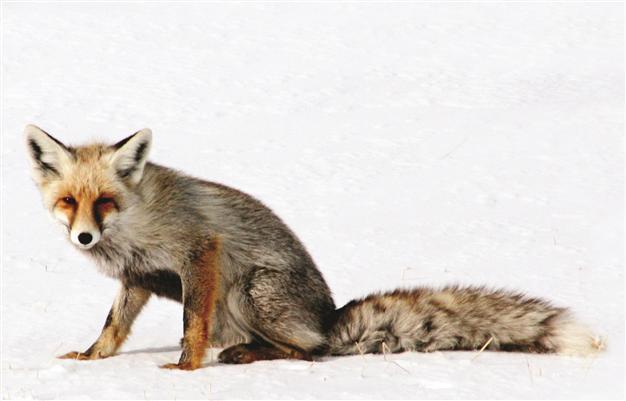Motion-triggered cameras reveal wildlife in the eastern Anatolian region
Serkan Ocak ISTANBUL / Radikal

In a two-by-two kilometer area in the national park, the motion-triggered cameras have taken 3,000 wildlife photos since 2008.
Sixteen motion-triggered cameras are capturing images of wildlife in the Eastern Anatolian region.These photos, which are very rare in Turkey, are being taken in Sarıkamış Allahüekber Mountains National Park and the forest around it between the borders of Kars and Erzurum, daily Radikal reported yesterday. The motion-triggered cameras, placed by the KuzeyDoğa Society, have taken 11,000 photos since 2008.
Motion-triggered cameras are very sensitive tools; even the wind can activate them. They also take pictures of clouds or people walking around. Of the 11,000 photos taken, only around 3,000 were of animals in their environment.
Speaking to daily Radikal, Emrah Çoban, the scientific coordinator of the KuzeyDoğa Society, said they first tried motion-triggered cameras in 2006 in Sarıkamış. “We are working in a two-by-two kilometer area in the national park and the forest around it, examining the behavior of animals where they are active.”
The association prepared the project, titled “Animal Corridor,” in order to reduce the conflict between wildlife and humans, and it thus signed a contract with the Ministry of Forestry to this end. The purpose of the project is to unite the forestland in nine districts and 44 villages in Erzurum, Kars, Ardahan and Artvin, in an 82-kilometer strip.
Çoban said the work would continue for at least five years, and that forestation would begin in 2013 in an area of 7,000 hectares. “When it is done, we will create a forest corridor on a 23,000-hectare area. We need more motion-triggered cameras. We are waiting for support from the ministries and sponsors.”
‘People cut down trees to steal cameras’
Çoban said people did more damage to nature than animals. “Out of 16 cameras, four have been stolen. We attach them to trees with chains for security but they cut down the trees. Two cameras were broken to pieces by bears because they sensed the smell of humans on them.”
He said three different wolf packs lived in the national park and they had taken many wolf photos in there. “There are six to seven wolfs in a pack, and they were followed closely for the first time ever in Turkey in this project. Transmitters were hung on the necks of two wolves. The wolves’ names are Kuzey and Doğa. We follow them closely all the time. The transmitter on their neck automatically falls off in 52 weeks. We will then determine their locations and put new transmitters [on them].”
The project also captured a wildcat family on film for the first time in Turkey. “We have learned that they mostly eat rabbit, and we presume they eat deer as well,” Çoban said.
















